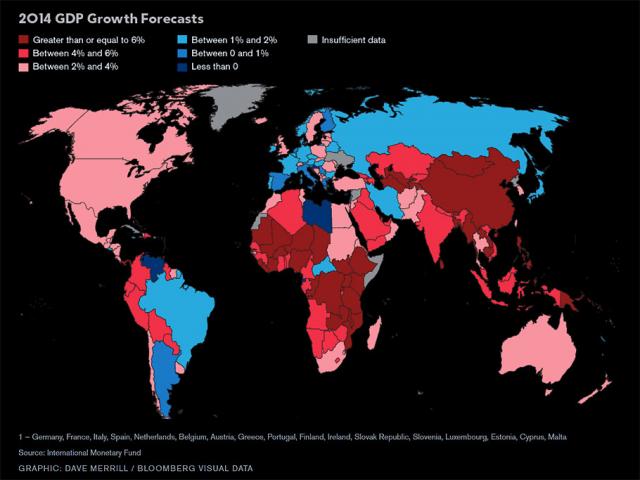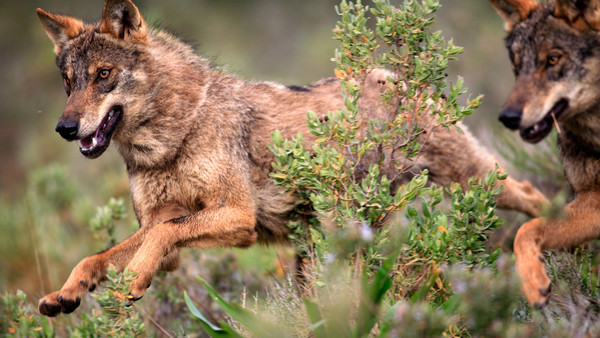Recovery in domestic tourism this Easter
Wednesday, April 23, 2014
Tourism continues to provide positive news for the Spanish economy. If 2013 saw a record number of foreign visitors flocking to Spain – in excess of 60 million, compared with the country’s total population of under 50 million – the Easter holidays provided signs that domestic tourism is finally recovering.
Accommodation occupancy rates during the period were 75.7%, seven points above the same period last year, said Industry, Energy and Tourism Minister José Manuel Soria on Tuesday.
During a meeting with the press organized by El Economista, Soria added that hotel occupancy rates were 76% compared with 71% in 2013, and occupancy of vacation rental properties was 89% compared with 57% in Easter 2013.
Overall occupancy from April 11 to 21 was 77%, eight points above last year’s figure of less than 68%, the worst in five years as a result of weak domestic demand.
The provisional 2014 figures allowed Soria to talk about “a clear recovery” in the flow of Spanish tourists.
Lower prices and fewer hotel beds have also helped improve figures.
Meanwhile, figures to March released by tourism authorities show that 10.1 million foreigners visited Spain in the first three months of the year, representing a 7.2% rise from the same period last year.
 0
Like
Published at 11:06 AM Comments (0)
0
Like
Published at 11:06 AM Comments (0)
Gulliver is in Valencia
Wednesday, April 16, 2014
In Gulliver's Travels, the main character is tied down by fearful Lilliputians who climb all over him in an attempt to subdue the "giant" and visitors can relive this famous literary scene at the Parque Gulliver in Spain.
This surreally large play park is constructed to resemble a giant stylised Gulliver which kids and adults alike can climb all over and slide down. The structure features multiple slides and stairways hidden around the massive body and hidden in the concrete folds of his clothes. The park's sleeping colossus is so large that even the strands of Gulliver's hair are huge slides.
Gulliver's towering hat is off to the side of the playground as though casually dropped at his side, and in a meta-flourish there is a miniature model of the recumbent Gulliver park so that visitors can get an idea of what the site looks like from above.
So if you have kids or grandchildren and happen to be passing through Valencia, you might want ot check it out...oh and it's FREE by the way.


 1
Like
Published at 1:39 PM Comments (1)
1
Like
Published at 1:39 PM Comments (1)
First Quarter 2014 - Foreign tourists rise
Tuesday, April 15, 2014
A total of 10.1 million foreign tourists visited Spain during the first quarter of 2014, representing an increase of 7.9% over the same period of 2013. This is according to data published in the Coyuntur report last week by the Ministry of Industry, Energy and Tourism, which confirmed the upward trend in not only international but also in domestic tourism.
Growth in all the major tourism markets contributed to the positive results, such as the number of tourists from Italy increasing by 8.9% to a total of 546,000. However, the UK remained the main source of tourists to Spain, accounting for 1.9 million people who visited the country in the first three months of the year, representing an increase of 6.7%. France and Germany were the next largest source markets, both with 1.6 million tourists and increases of 8.8% and 5.2%, respectively, followed by the Scandinavian countries, with 1.2 million tourists, and an increase of 8.3%.
Also noted, was the increase in tourist expenditure during the quarter. Specifically, international tourists spent 9,827 million euros, which equates to an increase of 5.6% over the same period of 2013. The study also shows growth of 7.4% in the number of overnight stays by non-resident tourists, reaching more than 91 million overnight stays.
The Canary Islands was the region which received most foreign tourists, with 3.1 million arrivals and an increase of 10.2% in the quarter, followed by Catalonia (2.5 million tourists), Andalucía (1.2 million), Madrid (977,000) and Valencia (904,000).
The report also highlighted the important increase in domestic tourism, with the Spanish travelling 2.9% more up until the end of March, with a total of 31.1 million trips. Domestic travel increased by 4%, while trips abroad fell by 1.8%. Overnight stays by domestic tourists fell by 0.3%, to 116.2 million stays recorded in the first quarter.
Andalusia was the favourite destination for the Spanish, with 4.7 million visits, despite an 18.5% drop in overnight stays, followed by Catalonia, with 4.1 million visits and an increase of 59.2% in hotel stays, and Valencia with 3.1 million visits and a 1.8% decline in overnight stays.
In addition, the report predicts that international tourist arrivals will exceed 17 million in the second quarter, 9.6% more than last year. These good tourism results have enabled the creation of 34,098 jobs, up 2.7% from the previous year. This represents 30% of the total of new Social Security contributors in those months, stated the Alliance for Tourism Excellence, Exceltur.
“These findings strengthen the capacity of tourism to accelerate economic recovery and job creation”, said executive vice president of Exceltur, José Luis Zoreda.
In addition, Diario Sur reported that the forecasts for Easter are positive, with 56% of tourism businesses expecting a moderate rise in sales over the previous year. According to the Exceltur study, Spanish tourism will grow by 2% in 2014 thanks to the strong increase in international tourist arrivals and the recovery of domestic demand which, said Zoreda, “opens a promising horizon for the sector in 2014″.
 1
Like
Published at 4:55 PM Comments (0)
1
Like
Published at 4:55 PM Comments (0)
Marks & Spencer to Return to Spain
Tuesday, April 15, 2014
The British department store chain, Marks & Spencer, plans to return to Spain after abandoning the Spanish market nearly 14 years ago, following the sale of their stores to El Corte Inglés. The company has included Spain as a priority market in its international development plan, and intends to have a significant presence in Madrid and Barcelona, by opening large department stores in both these Spanish cities.
El Mundo reported that M & S officials have said they want to repeat the strategy developed in France, Holland and Belgium, where the group is opening large department stores complemented by smaller food franchises and online sales.
The M & S group is looking for store premises in the main shopping districts of both cities which could mean the return of the M & S brand to some of the streets that it left in 2001, such as Serrano in the Spanish capital and Plaza de Cataluña in Barcelona city.
After ceasing to operate in Spain in 2001, with the closure of nine stores located in Barcelona, Madrid, Valencia, Bilbao and Seville, the chain remained operational in the Canary Islands and then in 2009 returned to the peninsula, with a franchise in the La Cañada shopping centre in Marbella (Málaga), strengthened in February last year with the launch of their Spanish online shop.
The department stores may reach a capacity of more than five thousand square metres, depending on the locations available, and the company is also seeking a local partner to open franchises of its food products in both cities.
The management of M & S analysed the possibility of reopening establishments in Spain for several years and, in 2011, the British press speculated on the possibility that the chain would buy back some of the stores transferred to El Corte Inglés. However, the economic crisis and the drop in consumption delayed the company’s plans to return to Spain.
In total, the company plans to open 250 new stores and franchises outside of the UK in three years.
 0
Like
Published at 4:52 PM Comments (0)
0
Like
Published at 4:52 PM Comments (0)
Nine Spanish TV channels to be closed down
Saturday, April 12, 2014
Movies, series, soap operas and docu-fiction will have less of a presence on Spanish television from next month.
Nine DTT (Digital Terrestrial Television) channels will be shut down before May 6, the deadline set by the Industry Ministry. Private operators have already decided which signals will be turned off (see box); these include La Sexta 3, which shows mostly movies; Xplora, which broadcasts shows that fall between documentary and fiction; and La Siete, which features a range of Latin American soaps.
This shutdown is the result of a 2012 Supreme Court ruling that cancelled out the concession of additional channels to existing broadcasters, on the grounds that the concession was made without a public bid and that new operators were thus deprived of a chance to join the market.
Broadcasters — Atresmedia, Mediaset, Unidad Editorial and Vocento — have appealed to the Constitutional Court, claiming that their rights have been violated. The chairmen of Atresmedia and Mediaset, José Manuel Lara and Alejandro Echevarría, tried to halt the closure last week by sending a letter to Industry Minister José Manuel Soria expressing “our most absolute perplexity and disagreement” with the request to shut down nine of the 24 stations that the four private operators currently run.
“The end of programming that we are being forced into is an unprecedented situation in any democracy; it is an attack on the rights of citizens, who will see their choices reduced,” reads the letter.
The Supreme Court considers that freedom of expression is not being violated. What’s more, the court is considering a complaint by a company that was left out of the market due to the absence of a public bid, which could result in an additional eight stations shutting down.
Disappearing TV channels
Operators have decided to close down their newest channels, or those with audience ratings of under two percent.
La Sexta 3. One of two movie-based channels. In March audience share was 1.6 percent.
Xplora. Hardcore Pawn, now into its 10th season, is the most popular program on this channel.
Nitro. The channel is aimed at a male audience and airs shows such as Law And Order and The A Team.
La Siete. It specializes in Latin American soaps such as Mi pecado (or My sin), La madrastra (or The stepmother), and Mentir para vivir (or Lying to make a living).
Nueve. Mediaset’s newest channel features re-runs of the most successful shows aired on Telecinco and Cuatro.
Net TV. Teleshopping will be no more, but Vocento is keeping Paramount Channel and the Disney Channel.
Veo TV. Unidad Editorial said it will keep Discovery Channel and 13 TV operational.
 0
Like
Published at 9:29 PM Comments (2)
0
Like
Published at 9:29 PM Comments (2)
GDP 2014 Growth Forecasts
Wednesday, April 9, 2014
Interesting.....

 0
Like
Published at 12:00 PM Comments (0)
0
Like
Published at 12:00 PM Comments (0)
Big bad wolves?
Tuesday, April 1, 2014

In recent years in Spain the traditional tale of Little Red Riding Hood has been turned around to portray the wolf not as big and bad, but the victim. However, the classic version with the voracious beast still lingers in the collective imagination and a solid formula for peaceful coexistence with the species remains elusive.
Responsibility for the management of the Iberian wolf in Spain falls to the regions and policy varies greatly, while tensions between farmers and the authorities over compensation for the loss of livestock are running high in the most problematic areas of Asturias, Cantabria and Castilla y León. The complaints of farmers and hunters lead to the conclusion that wolf populations are on the rise; Castilla y León has backed this viewpoint in an official report, but biologists and conservationists do not agree. The debate always revolves around the same question: what can be done to allow humans and wolves to live side-by-side, while at the same time protecting the animals and preventing them from causing damage?
The European Union's Habitats Directive established a frontier in Spain to protect the Iberian wolf: the River Duero. South of the waterway the wolf is considered of "community interest" and is therefore protected. If an animal must be killed, the regional authorities are responsible for doing so. But north of the Duero the wolf's status is less clear. In Castilla y León, Cantabria and Galicia hunting wolves is permitted, but in Asturias it is not.
Castilla y León accounts for 60 percent of the total number of wolves in Spain, according to several specialists. The region's latest conservation and management program, which is pending approval, states that the wolf population south of the Duero is rising. There are no official figures but the report cites a census carried out in 2012 and 2013, which will soon be made public. Its preliminary conclusions say that the wolf's area of distribution south of the Duero increased by 34 percent between 2007 and 2012, a finding based on the first count of wolves ever undertaken in Spain, between 1999 and 2003, which is still used as a reference point to estimate the population.

Things haven't changed much over the past 10 years according to the report's co-author, ecologist Antonio Uzal, who works in wild animal conservation at the University of Nottingham Trent in the UK. Among the problems facing the wolf highlighted during that earlier census are pressure from authorized and illegal hunting, and the lack of viable corridors between populations, a necessity for inter-group breeding diversity. Castilla y León serves as the current meeting point between populations and is therefore considered the key by conservationists.
Regional data from 2001 recorded 149 packs, comprising around 1,500 individuals. Uzal's study, carried out with Andrés Ordiz, places the number of family groups in Spain at between 250 and 320 (250 confirmed with indications of a further 70).
Castilla y León's conservation program, published over the Christmas period, states that regional government employees will take responsibility for controlling wolf populations in the protected area south of the Duero with a quota system established on the northern side. According to its figures, a quota of 18 percent of the existing population will be enforced. In the previous program, set up in 2008, the quota was the same but in some southern areas in Segovia and Ávila it was raised to 28 percent. This program was challenged in the courts by Ecologists in Action because it allowed for the hunting of wolves in areas protected under EU legislation. Responsibility for the matter now rests with the national government in Madrid.
Biologists and conservationists consulted warn that the number of wolves reported in each region could be wildly overstated. Carrying out a solid census would require considerable time and effort as wolves are transient animals. Their territory can reach 100 square kilometers; in a nighttime outing they can run as much as 50km. Biologists point to the need to conduct a full national census in order to formulate policies to prevent an irreversible situation.
Genetic studies on the population of wolves in Spain and Portugal suggest that these animals have been much closer to extinction in relatively recent times than was previously thought. Today, the wolf occupies just 25 percent of its historical range. There have been no studies on its potential future distribution but because of a wolf's requirements - extensive habitat and sufficient wild prey - it is possible Spain's population could extend its range considerably.
According to biologist Alberto Fernández Gil, a member of the Association for the Conservation and Study of the Iberian Wolf (ASCEL), the government needs to determine the size of the population but it only speaks in terms of groups, to which an elevated number of members have been assigned. Fernández is the author of a doctoral thesis that concludes that attacks on domestic livestock actually increase when pack members are culled. His study, using data from Asturias, shows that there is a direct relation between the number of wolf deaths and damage to livestock in the year following a cull. If the alpha male is killed, the most coveted by hunters , then the pack's leader is taken away and those that are left do not know, for example, how to track and kill a boar and thus will then turn to sheep. There is no evidence that the population control carried out as it is in Spain currently serves to reduce damage to livestock. Wolves are being shot without thinking.
One recent episode serves to highlight the passions and hatred that the wolf still generates: nine were found dead inside the Picos de Europa National Park last December. In Cantabria there is no specific plan for the conservation of wolves, and one specimen is permitted to be shot per hunt. Conservationist groups have called on the regional government to clarify the situation because the Cantabrian group plays a "priceless" role in controlling wild ungulates, particularly deer, while helping to preserve the biodiversity of the Picos de Europa National Park.
In the middle of the debate is wolf tourism, which generates around half a million euros in the La Culebra mountain range in Zamora province, the epicenter of the sector in Spain. Javier Talegón, a biologist who founded the ecotourism firm Llobu (wolf in Asturian), believes that the interest in viewing live wolves proves they can be profitable, and that formulas exist for peaceful coexistence between the creatures and humans. Whether we are genuinely ready to rewrite the fairytales is something only time will tell.
 0
Like
Published at 1:34 PM Comments (0)
0
Like
Published at 1:34 PM Comments (0)
Spam post or Abuse? Please let us know
|
|